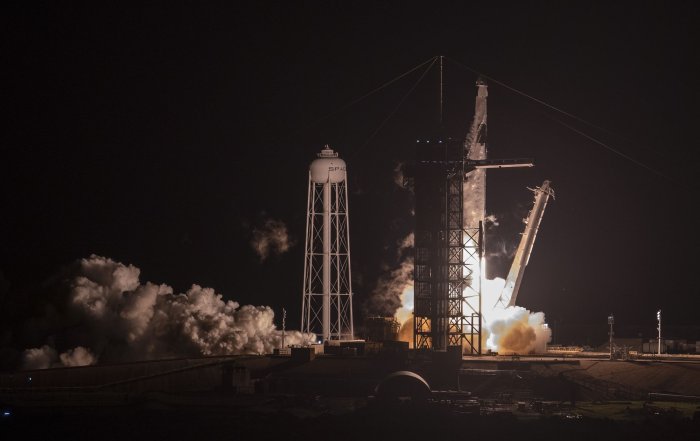ORLANDO, Fla., Jan. 27 (UPI) — Sirius XM’s newest satellite isn’t working properly and may be the subject of a $225 million insurance claim, the company said Wednesday in a filing with the U.S. Securities and Exchange Commission.
Elon Musk’s SpaceX launched the SXM-7 communications satellite Dec. 13, and testing of its systems began Jan. 4. But “events occurred which have caused failures” on the craft, Sirius XM reported.
“We have purchased insurance policies covering SXM-7 through launch and the first year of in-orbit operation,” Sirius XM said in its filing. “We have notified the underwriters of these policies of a potential claim with respect to SXM-7.”
Sirius XM said three of its satellites in orbit will continue to provide service, one of which SXM-7 was to replace eventually. Sirius XM and many other satellite operators launch replacement craft well in advance of any expected obsolescence.
“The SXM-7 issue will have no adverse effect on the operation of our satellite radio service nor on our existing fleet of operating satellites,” the company said in an email to UPI.
The failure on the record of the manufacturer, Colorado-based Maxar Technologies, is not a disaster, said Chris Quilty, a space analyst and owner of St. Petersburg, Fla.-based Quilty Analytics.
Maxar and its subsidiaries have “almost an unblemished record over 40 years of having no satellite failures on orbit,” Quilty said.
Some observers, however, will wonder if recent changes and cuts in the workforce at Maxar’s space operations contributed to the failure, he said.
“When it was going through the testing phase, they discovered a performance [problem] … but apparently they didn’t totally fix it,” Quilty said. He said Maxar wound up paying millions more in the attempt to fix the issue.
SXM-7 was to aid delivery of Sirius XM’s entertainment and data services to more than 100 million subscribers in North America, according to the company.
The satellite includes a large antenna and solar arrays that span 100 feet when unfurled, weighing in total more than 15,400 pounds. Maxar built and tested it at the company’s laboratory in Palo Alto, Calif.
Maxar has built all seven of Sirius XM’s satellites, including the first spacecraft that were launched in 2000. An eighth satellite is on order with Maxar.
Sirius XM service comes installed in new vehicles from every major automaker in the United States and is available in nearly half of the preowned vehicles for sale in the country, according to the company.
NASA, SpaceX launch historic mission to space station

A SpaceX Falcon 9 rocket with Crew-1 lifts off from Complex 39A at the Kennedy Space Center in Florida on Sunday. Photo by Pat Benic/UPI | License Photo

On board Dragon are NASA astronauts commander Michael Hopkins, pilot Victor Glover and mission specialist Shannon Walker, as well as Japanese mission specialist Soichi Noguchi. Photo by Joe Marino/UPI | License Photo

The Crew Dragon spacecraft with four astronauts aboard is headed for the International Space Station, a 27 1/2-hour journey. Photo by Pat Benic/UPI | License Photo

NASA astronauts Shannon Walker (L to R), Victor Glover and Mike Hopkins, and Japan Aerospace Exploration Agency astronaut Soichi Noguchi wear SpaceX spacesuits wave as they walk out of the Neil A. Armstrong Operations and Checkout Building to depart for launch Photo by Joel Kowsky/NASA | License Photo

Japanese astronaut Soichi Noguchi engages with the crowd as he prepares to depart. Photo by Joel Kowsky/NASA | License Photo

NASA astronauts Shannon Walker (L to R) and Mike Hopkins and Japanese astronaut Soichi Noguchi prepare to depart for the launch pad. Photo by Joel Kowsky/NASA | License Photo

The astronauts wave before they ride to Complex 39A to board the Dragon spacecraft as the first operational crew to be launched on SpaceX equipment to the International Space Station. Photo by Joe Marino/UPI | License Photo

NASA Administrator Jim Bridenstine makes comments during a press conference at Kennedy Space Center in Florida on November 13. Photo by Pat Benic/UPI | License Photo

An alligator starts to cross a road while photographers set up remote cameras as a SpaceX Falcon 9 rocket is being prepared to
launch the first operational Crew Dragon spacecraft on November 13. Photo by Pat Benic/UPI | License Photo

A SpaceX Falcon 9 rocket with the company’s Crew Dragon spacecraft atop is seen on the pad at Launch Complex 39A after being rolled out overnight as preparations continue for the Crew-1 mission on November 10. Photo by Joel Kowsky/NASA | License Photo

A SpaceX Falcon 9 rocket with the company’s Crew Dragon spacecraft onboard is seen as it is rolled out of the horizontal integration facility at Launch Complex 39A on November 9. Photo by Joel Kowsky/NASA | License Photo

Japanese space agency astronaut Soichi Noguchi speaks to members of the media after arriving from Houston at the Launch and Landing Facility at NASA’s Kennedy Space Center on November 8 ahead of SpaceX’s Crew-1 mission. Photo by Joel Kowsky/NASA | License Photo

NASA astronauts Shannon Walker (L to R) Victor Glover and Mike Hopkins, and Japanese astronaut Soichi Noguchi, are seen after arriving at the Launch and Landing Facility at NASA’s Kennedy Space Center ahead of SpaceX’s Crew-1 mission. Photo by Joel Kowsky/NASA | License Photo

NASA’s SpaceX Crew-1 astronauts participate in crew equipment interface testing at SpaceX headquarters in Hawthorne, Calif., on September 24. Photo courtesy of SpaceX | License Photo








